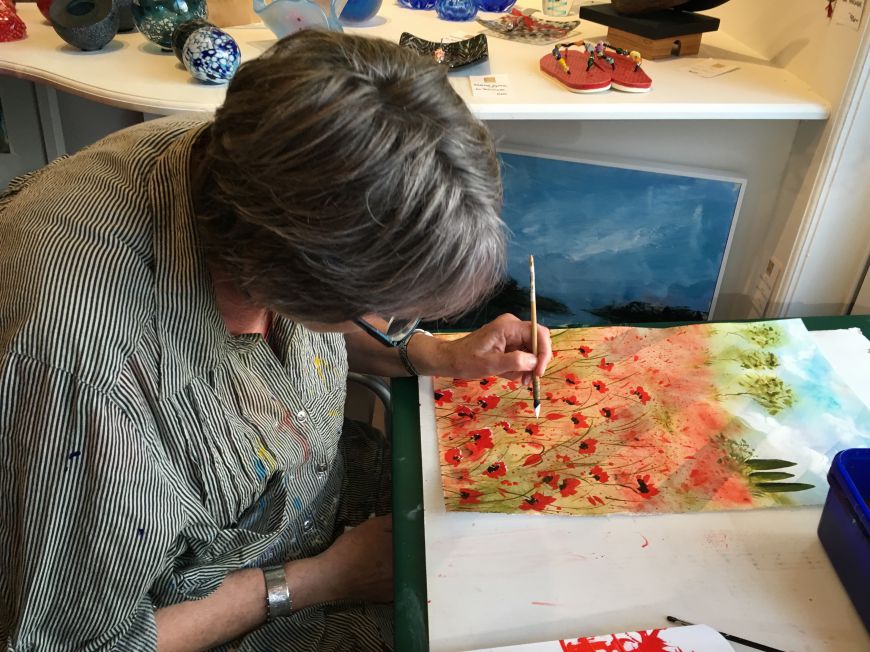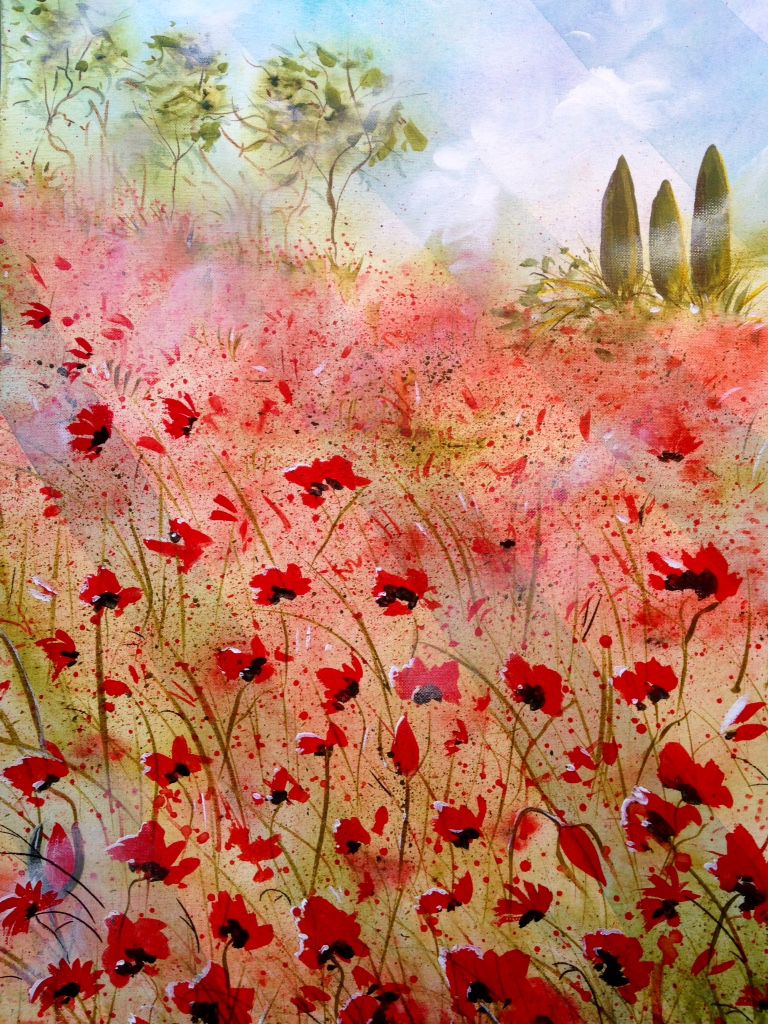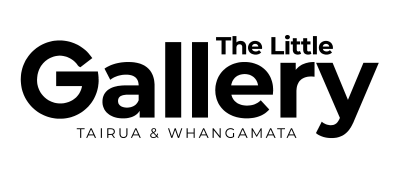Art Creation with Liz Hart
- 28 June 2016
- Sarah Holden
 As the rained poured down outside, people poured inside The Little Gallery to watch impressionist artist Liz Hart demonstrate her process. Liz had already painted a base coat of field and sky hues with light bands that glow overtop to prepare the paper and give it time to dry. At this stage it doesn’t look like much other than strips of colour as you move up the painting from green to yellow to blue. Liz wants to paint a field of poppies.
As the rained poured down outside, people poured inside The Little Gallery to watch impressionist artist Liz Hart demonstrate her process. Liz had already painted a base coat of field and sky hues with light bands that glow overtop to prepare the paper and give it time to dry. At this stage it doesn’t look like much other than strips of colour as you move up the painting from green to yellow to blue. Liz wants to paint a field of poppies.
Liz is using acrylic paint but her first love is watercolours and therefore she treats the acrylic paint in the same way, and uses watercolour brushes. This gives her a more vibrant colour and she mixes two different reds to create a more realistic poppy red. She also mixes the black with indigo to soften the centre colour of the poppy. She is aiming for the impression of poppies and emphasized that she isn’t a botanical painter and doesn’t create realistic flowers. She feels you can take a photo for that.
Liz is working from light to dark. This isn’t regarding the colours but the strength of the colour. The background is light, making it appear further away, and the flowers are darker which makes them appear in the foreground of the painting.
She is using watercolour brushes and often jokes that she is wrecking them, but hey, you can always just get a new one. The unique thing about watercolour brushes is that they can hold quite a bit of liquid, which allows her paint loosely, and the acrylic paint gives her a richer, brighter colour. She notes that the quality of the paint is important so that when it is mixed with water it doesn’t lose viscosity or vibrancy.
Once the poppies in the foreground are added she flicks paint on using a toothbrush to depict the poppies further away. Some of the spot are lifted away using a tissue as they’ve hit the sky or landed in a tree – somewhere the poppy shouldn’t be! Experience has taught her when to stop and allow the layers to dry so they don’t bleed, lose definition and turn muddy. It’s also about knowing how much water to use e.g. getting the  balance right between the water and the paint. Also the paper needs to be taken into consideration (she uses high grade acrylic paper) as you don’t want the flicking brush to puncture the tooth of the paper or make it too wet so that it crinkles as it dries.
balance right between the water and the paint. Also the paper needs to be taken into consideration (she uses high grade acrylic paper) as you don’t want the flicking brush to puncture the tooth of the paper or make it too wet so that it crinkles as it dries.
We took a small break to give the paint a chance to dry and then Liz went back in and added some details such as light hitting the poppies by accentuating the edges with white paint. Then using acrylic paint pens she added the storks.
Liz discussed her composition in that your eye starts in the foreground, attracted initially by the poppies but then travels through the painting, over the field and to the trees and what day dreams are made of. She flicks the paint in a ‘higgledy, pickledy’ fashion to allow then to run into each other. It’s more realistic to have the flowers scattered that way rather than having them too structured and formal.
Liz stumbled across this techniqu e, discovered through her love of watercolour to using acrylic paint and it was fantastic to watch her process. Part of her style is having a limited palette, commenting that less is more so that the viewer isn’t overwhelmed or confused. Everyone agreed that it was mesmirising to watch how she effortlessly created a beautiful piece of art and appreciated the skill and experience that it takes to do it.
e, discovered through her love of watercolour to using acrylic paint and it was fantastic to watch her process. Part of her style is having a limited palette, commenting that less is more so that the viewer isn’t overwhelmed or confused. Everyone agreed that it was mesmirising to watch how she effortlessly created a beautiful piece of art and appreciated the skill and experience that it takes to do it.
Next month, on Friday 22 July at 5pm, we will be having a reception for the final night of our silent art auction raising money for our local kiwi care and rescue group. Please join us in support of this worthy cause.
Enjoyed this article? Sign up to our newsletter below and be the first to hear about our latest Art Chat posts!
